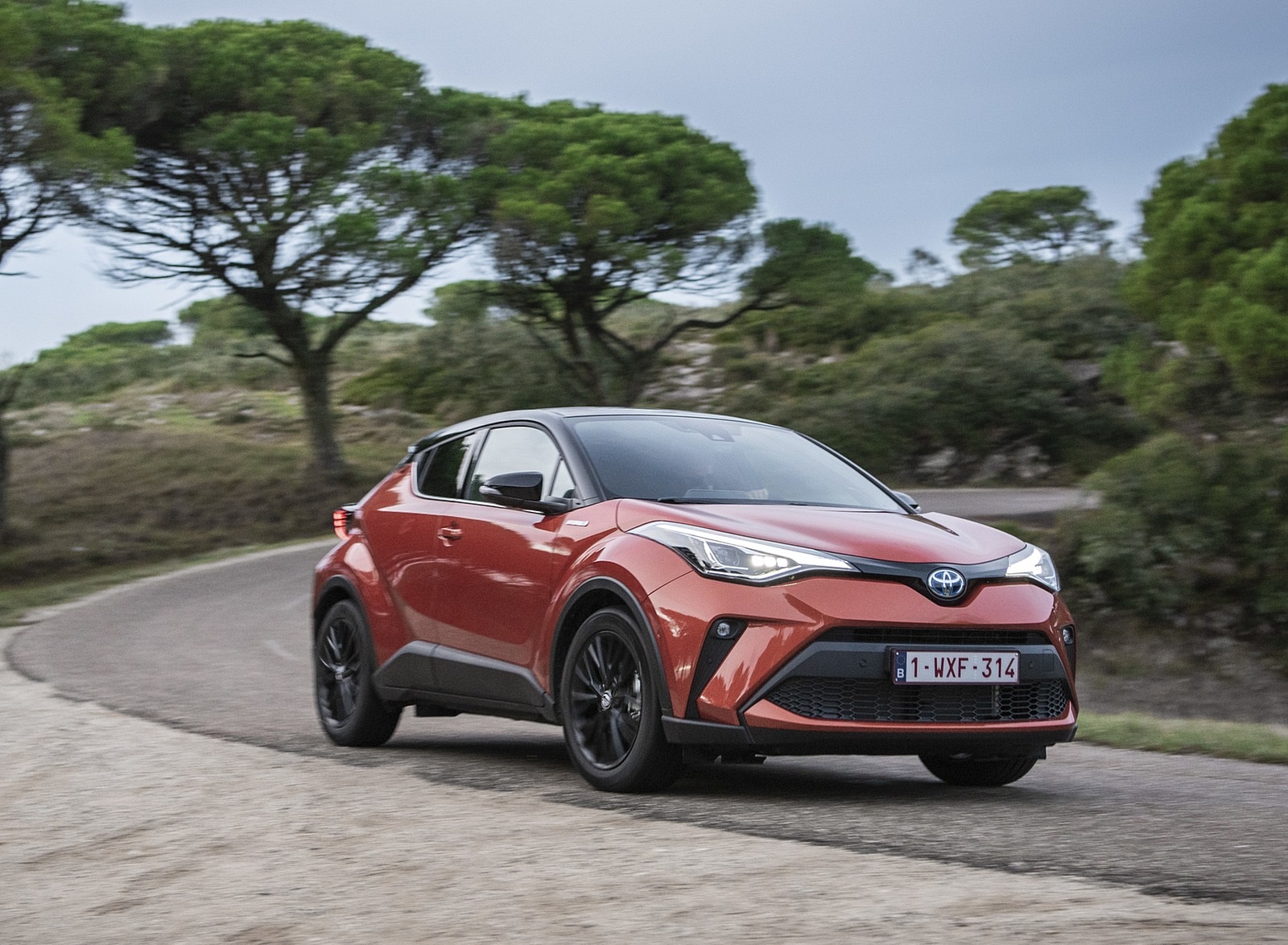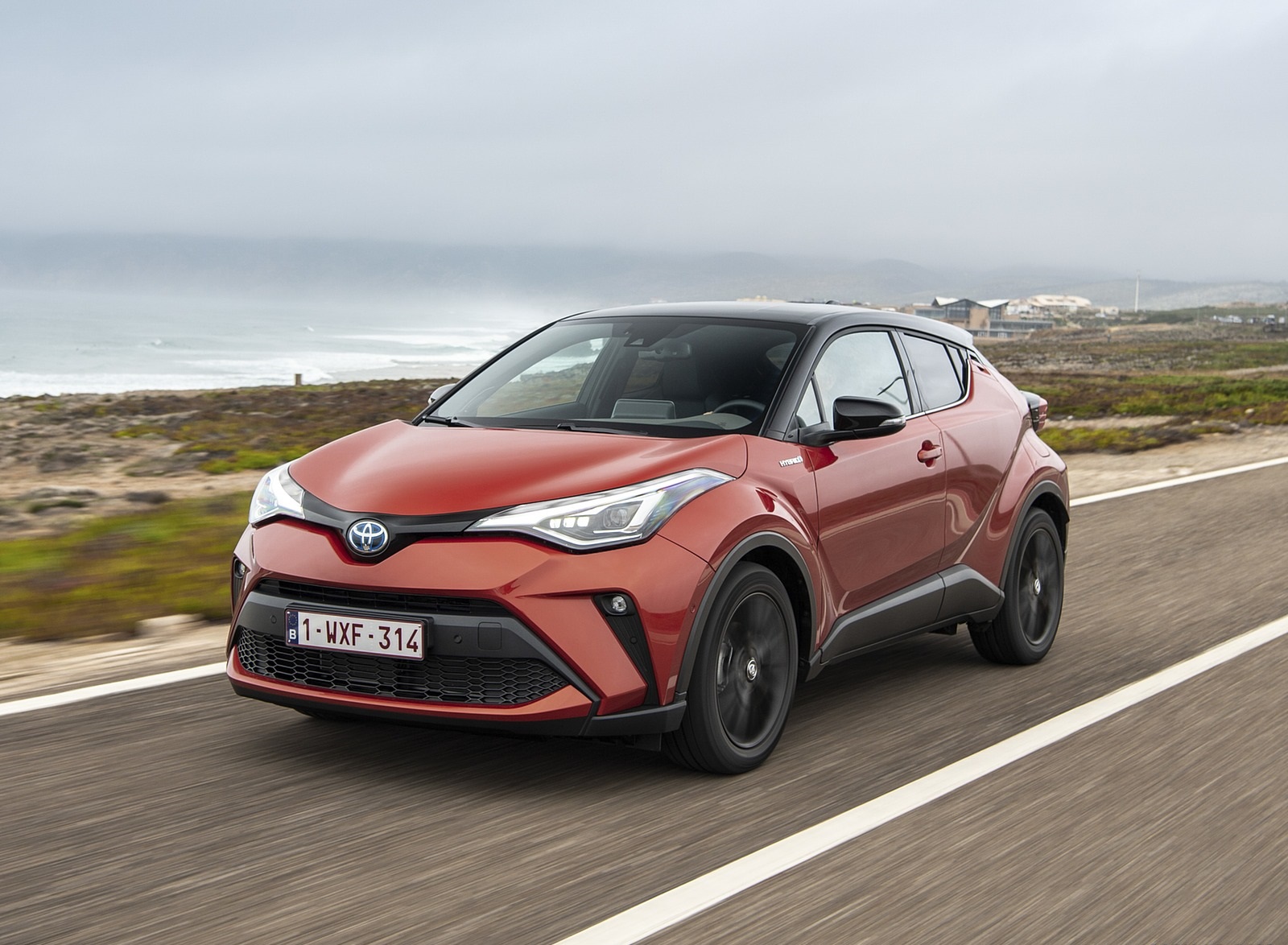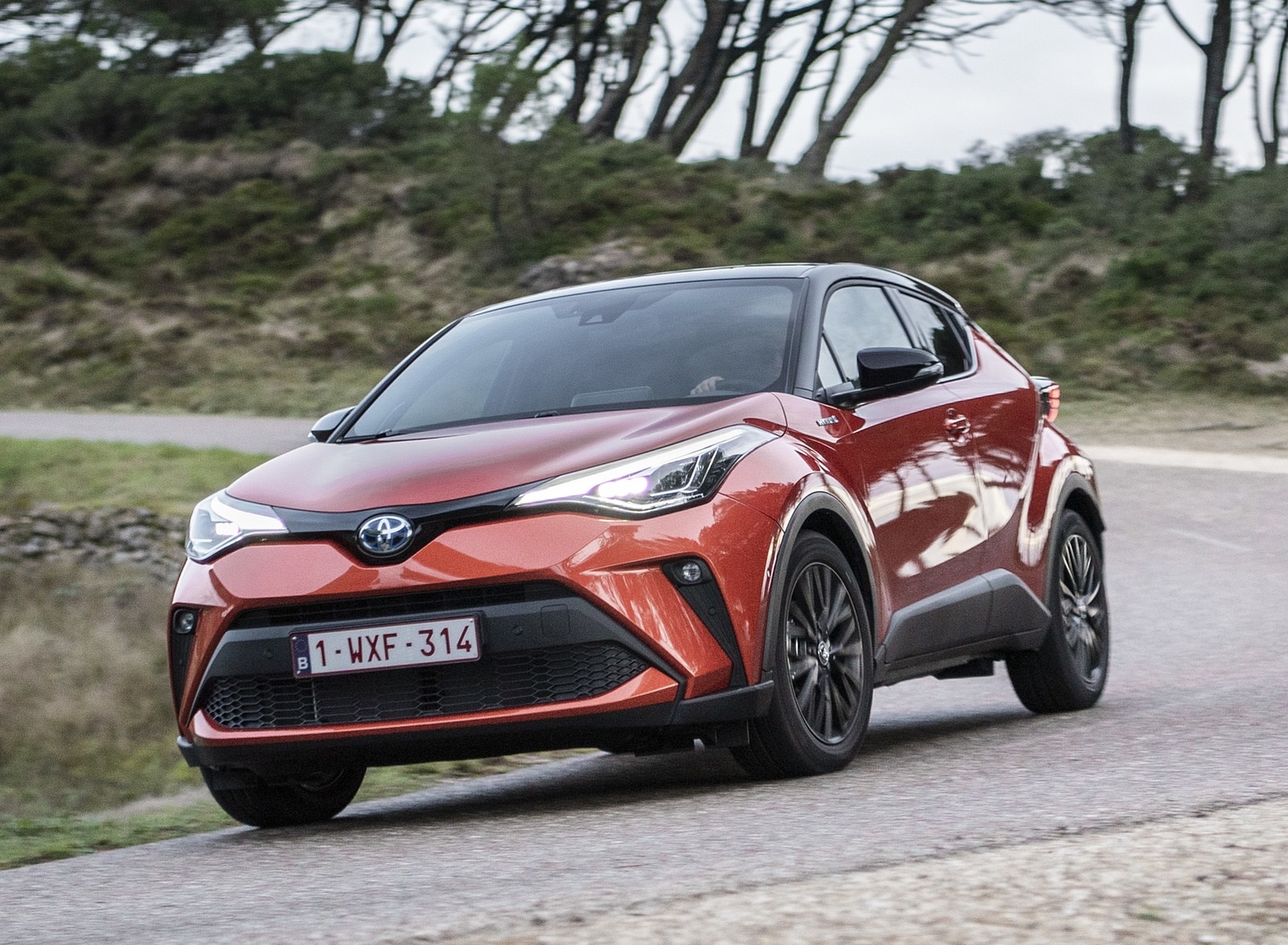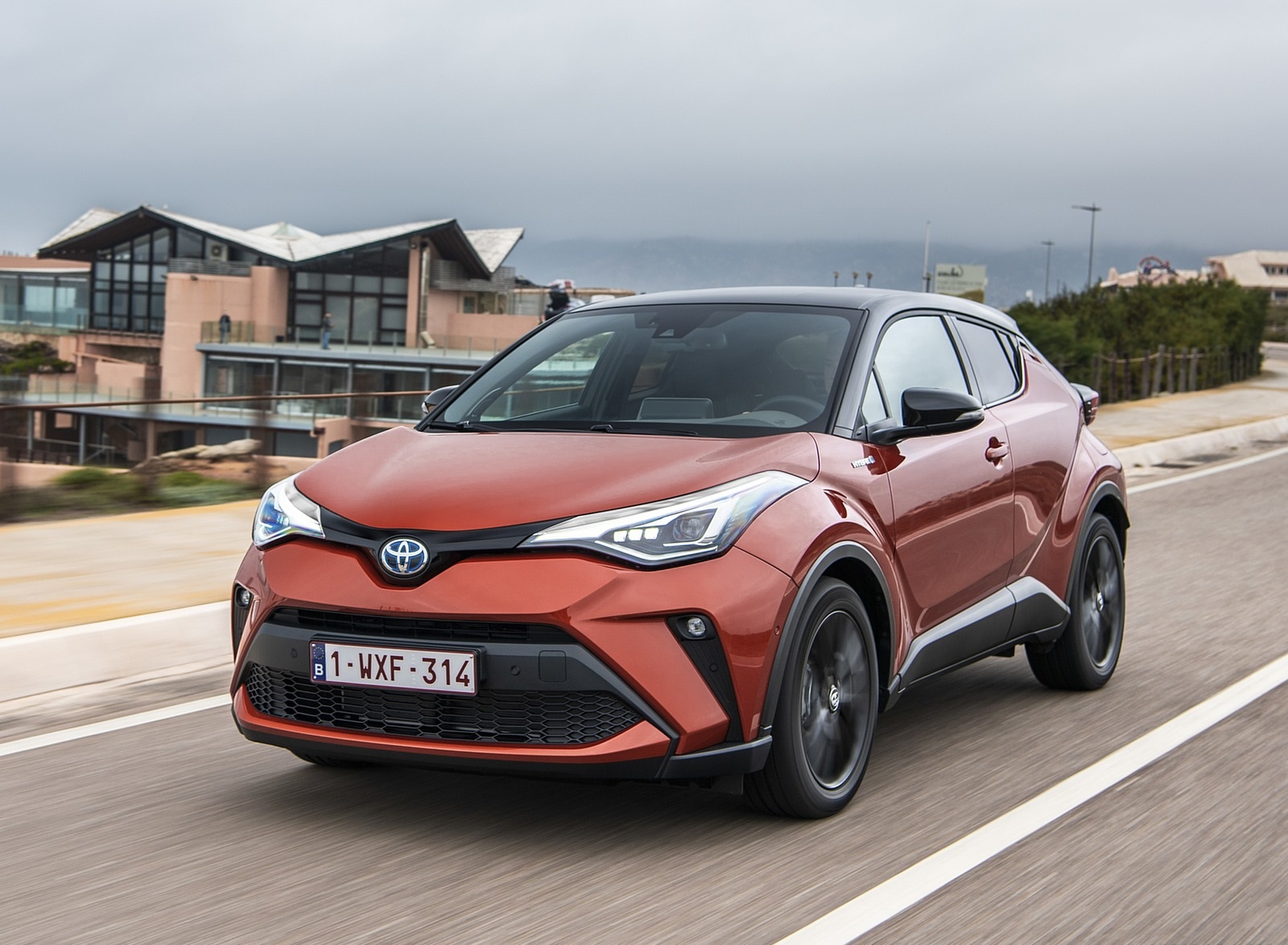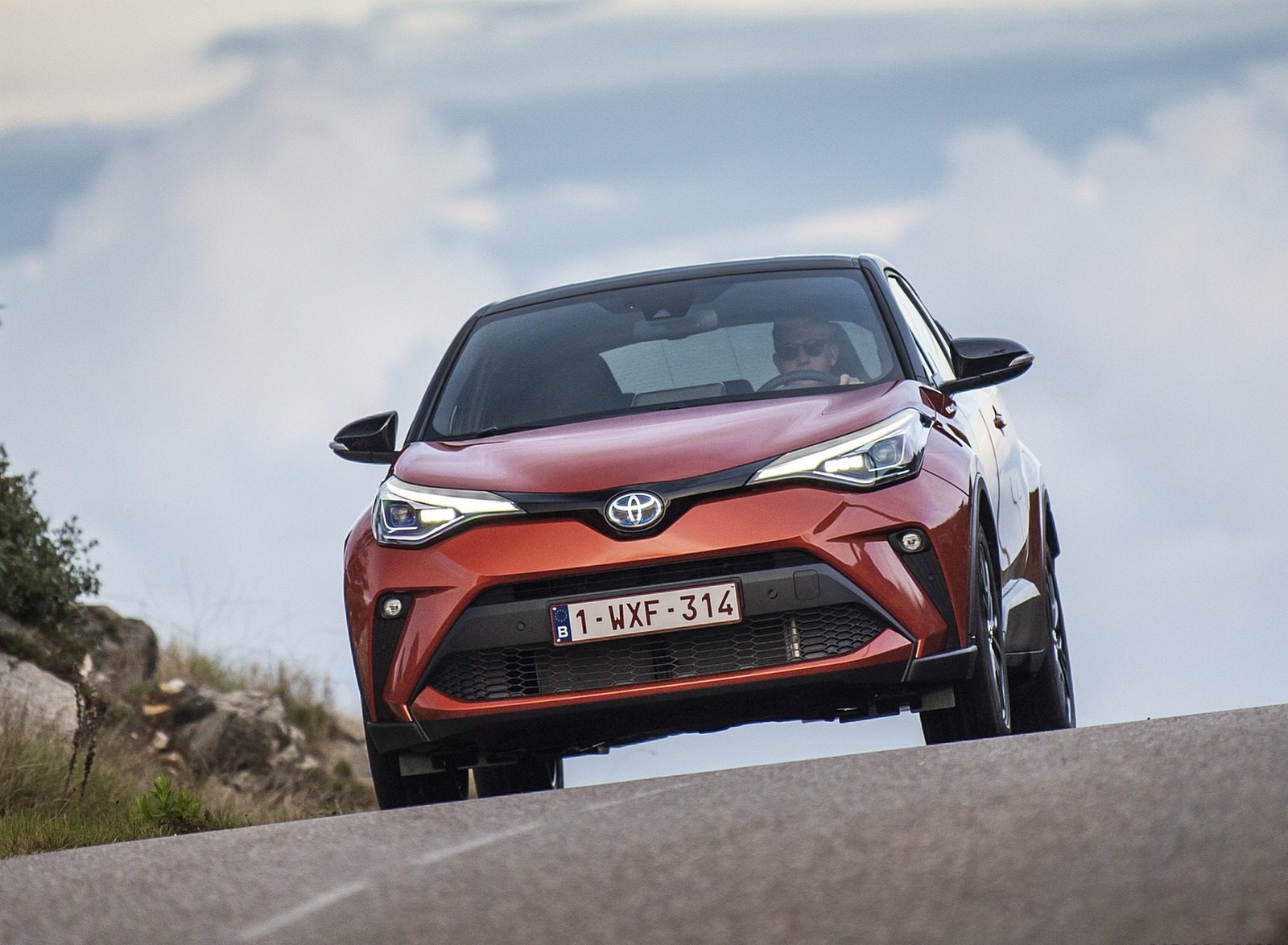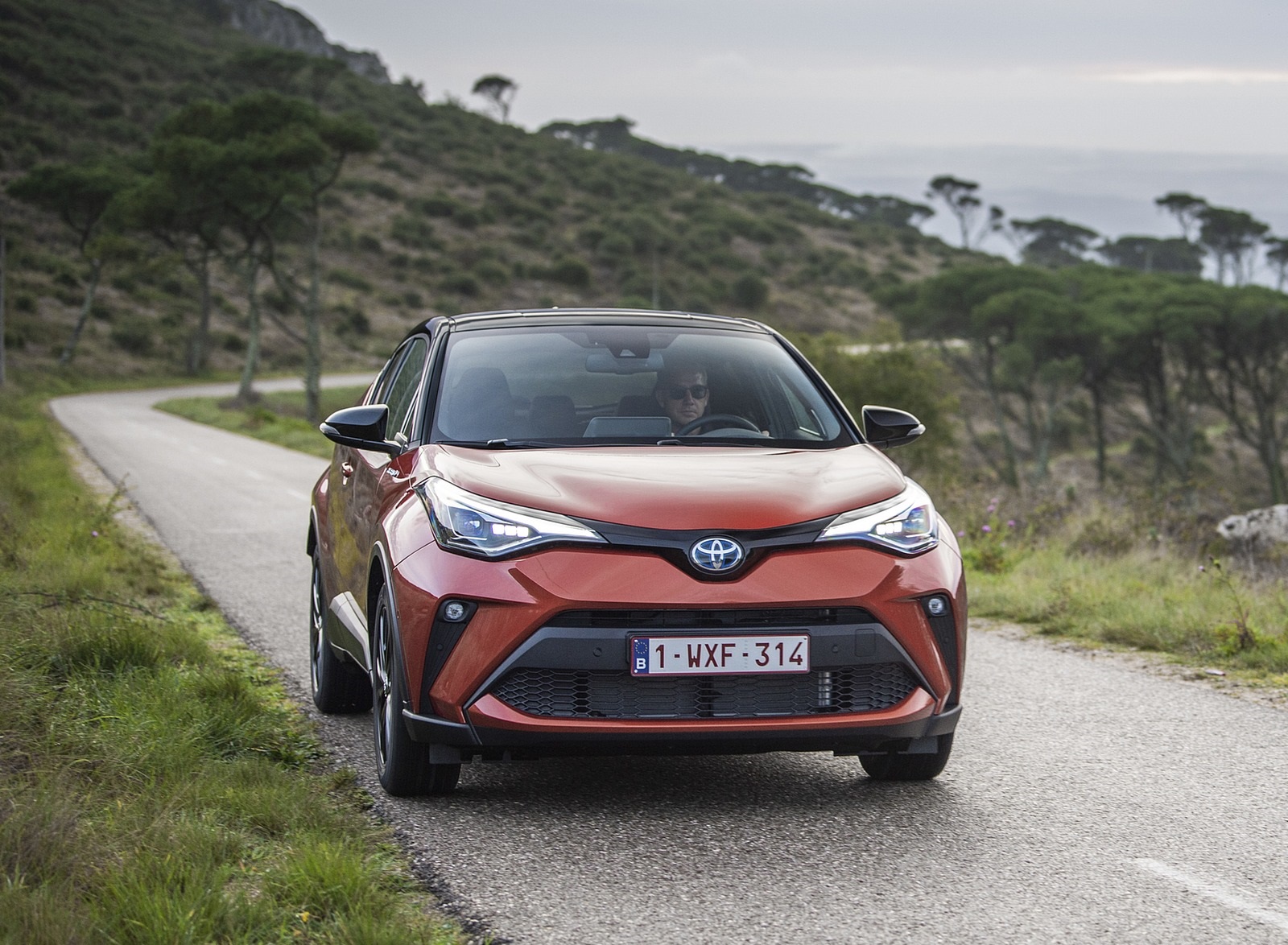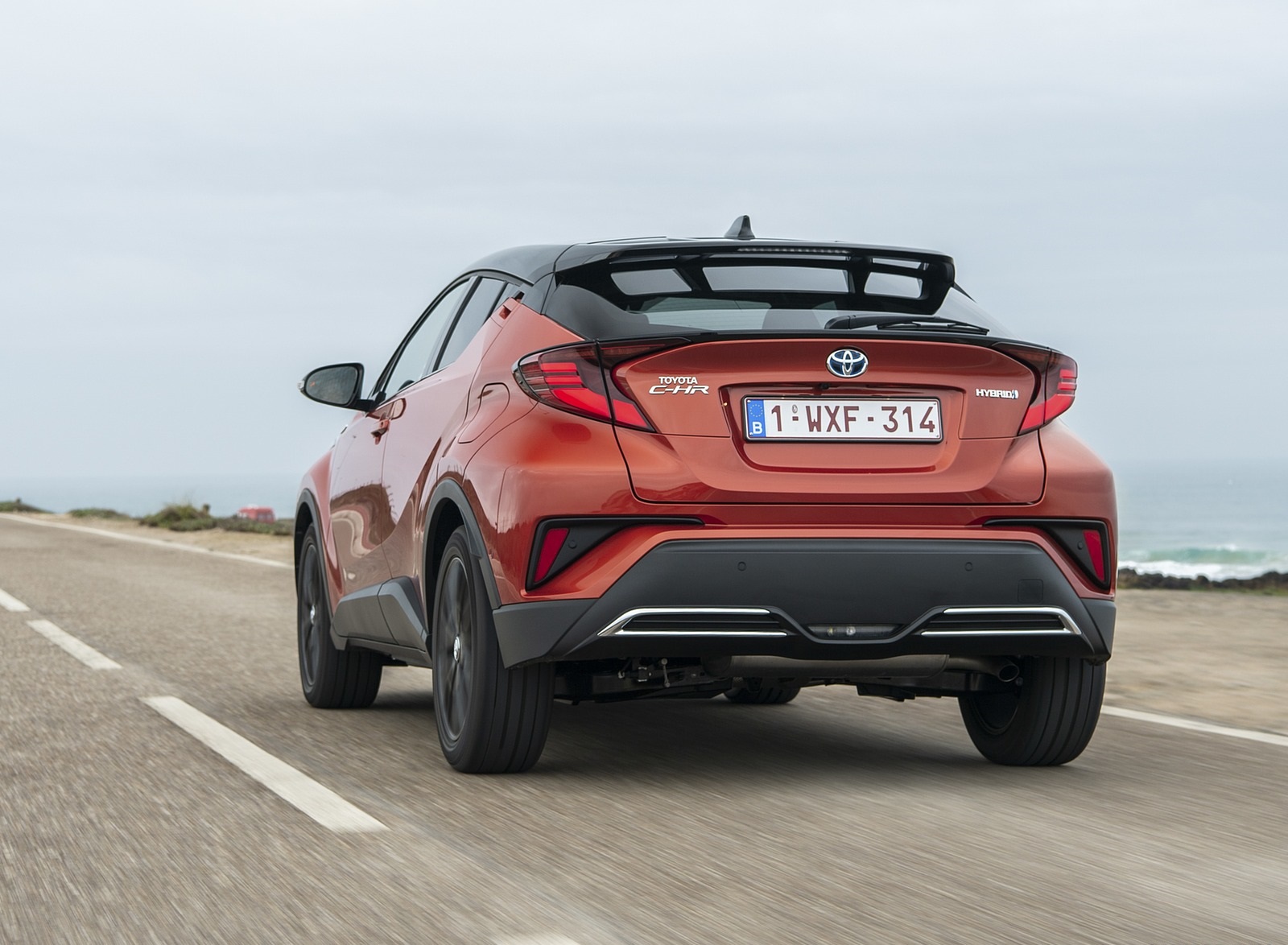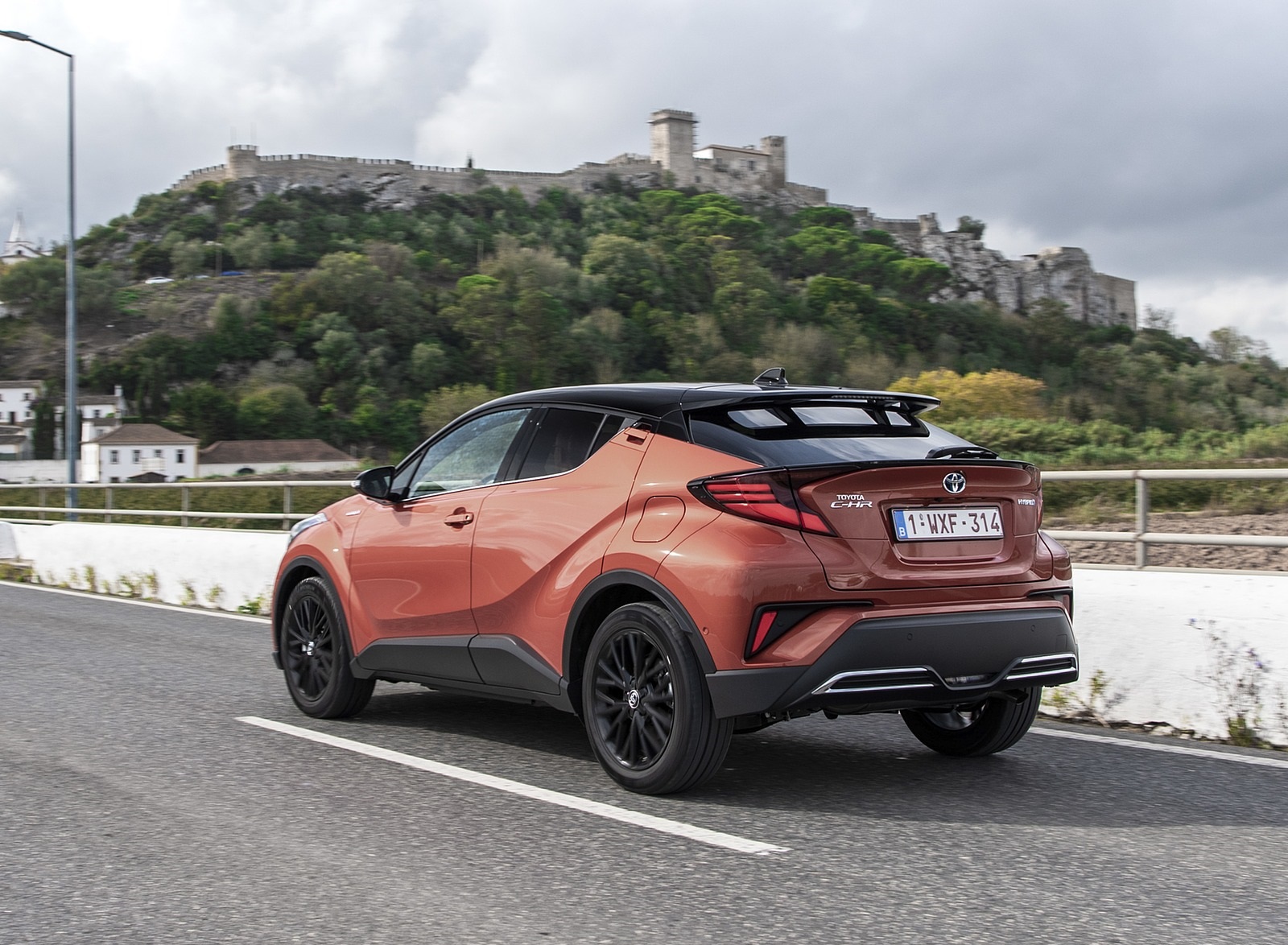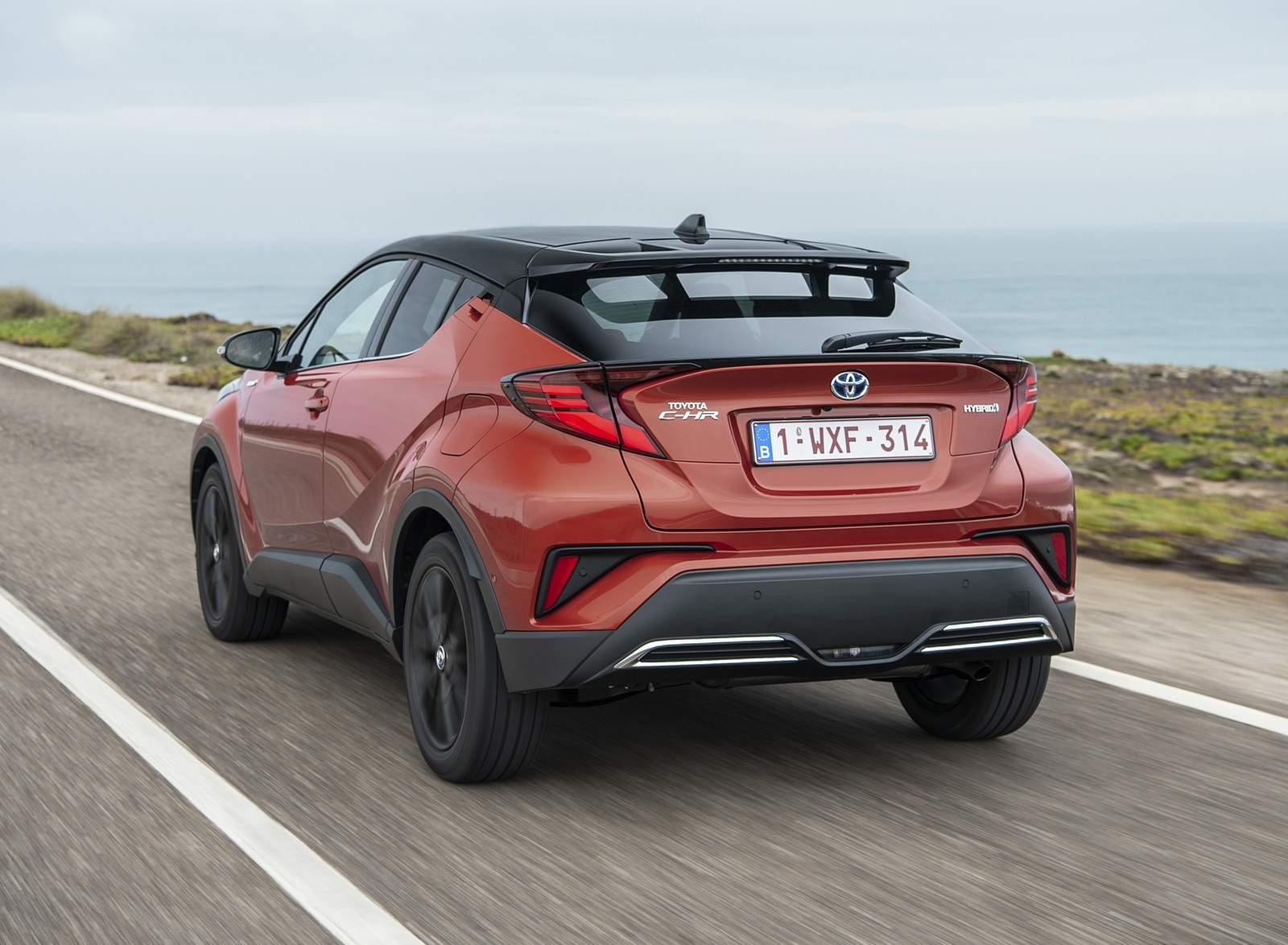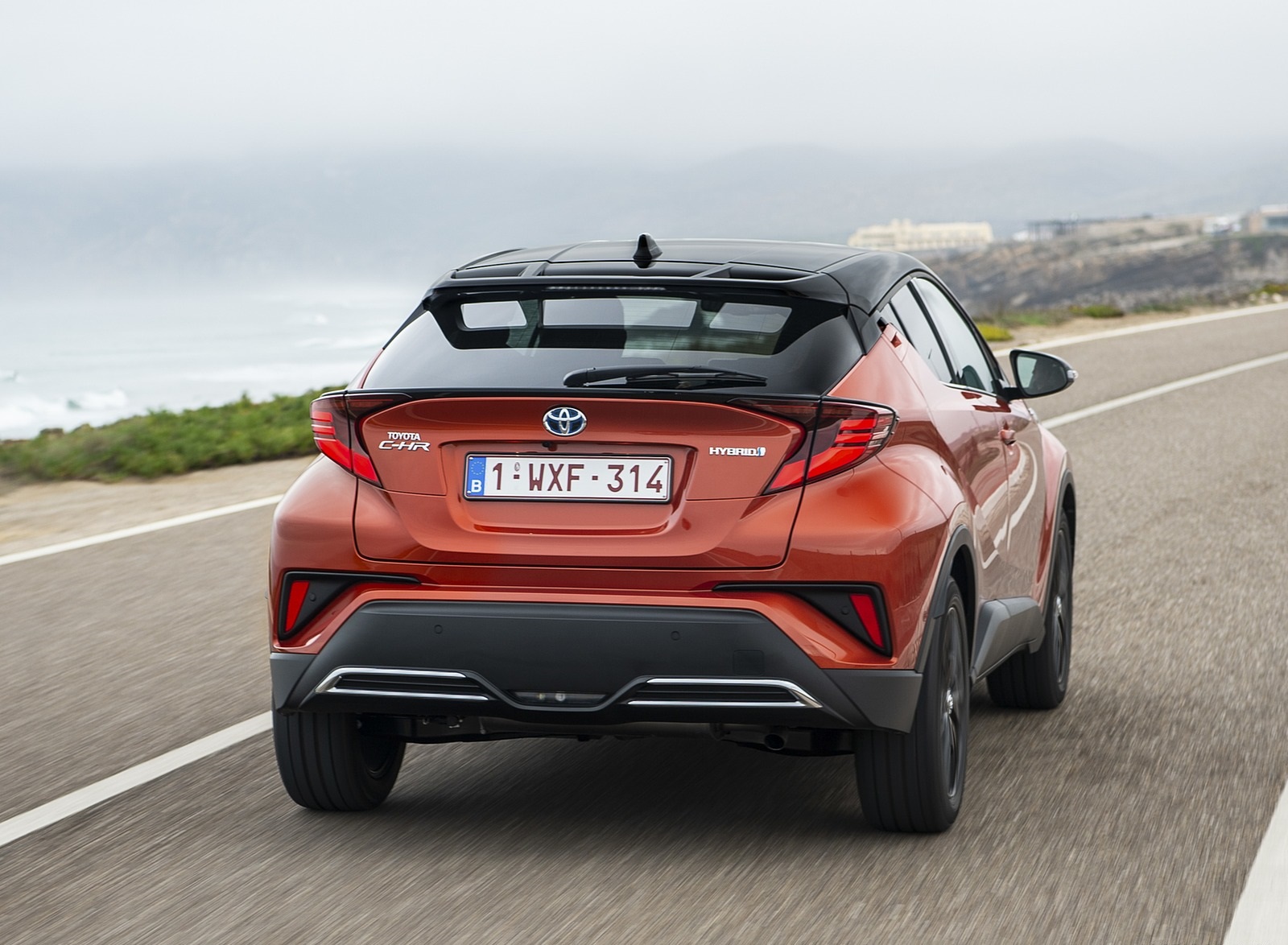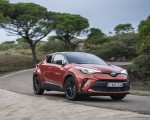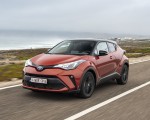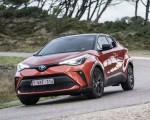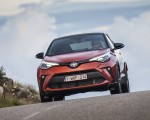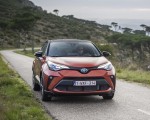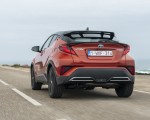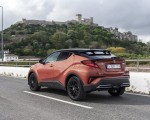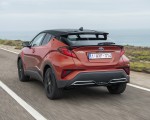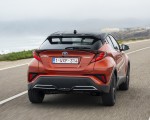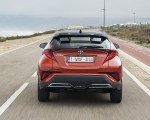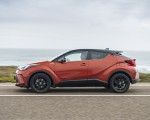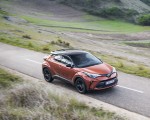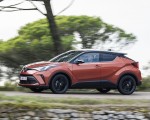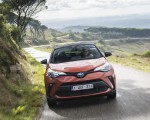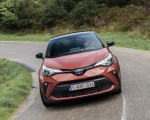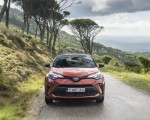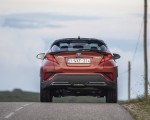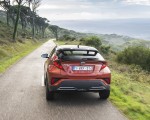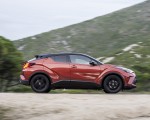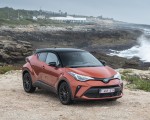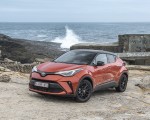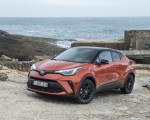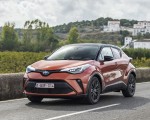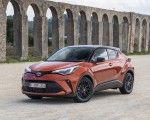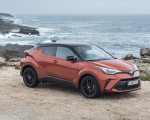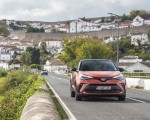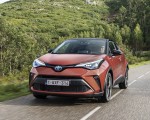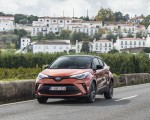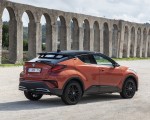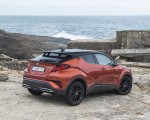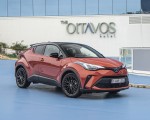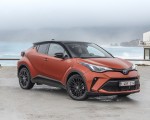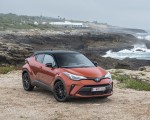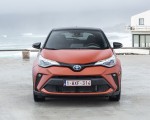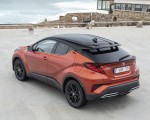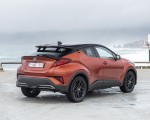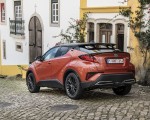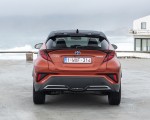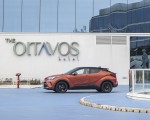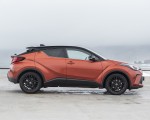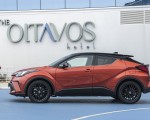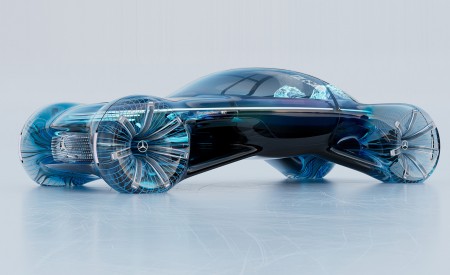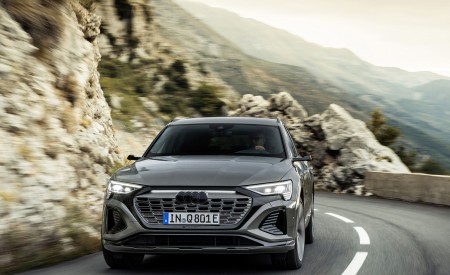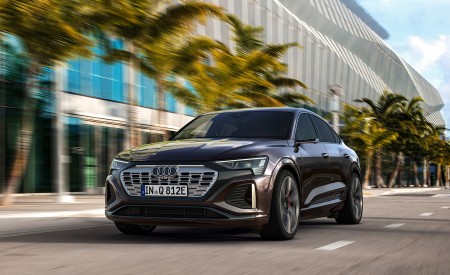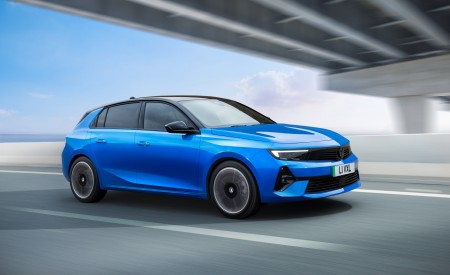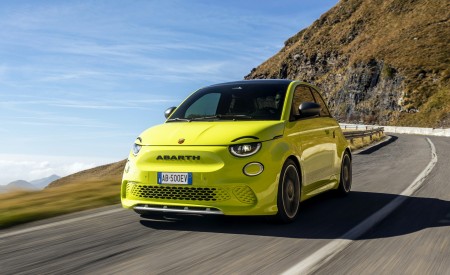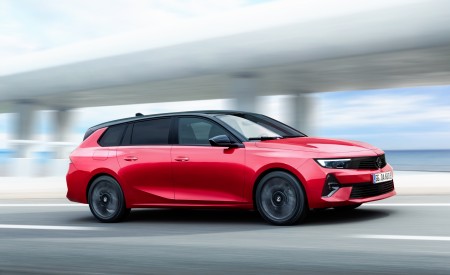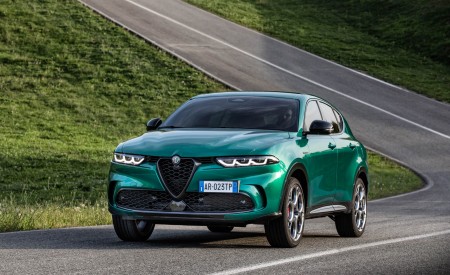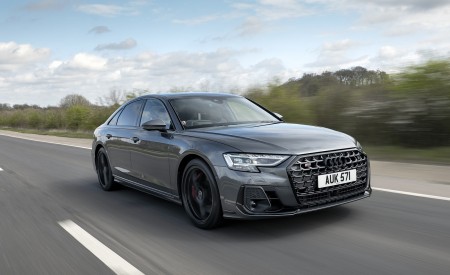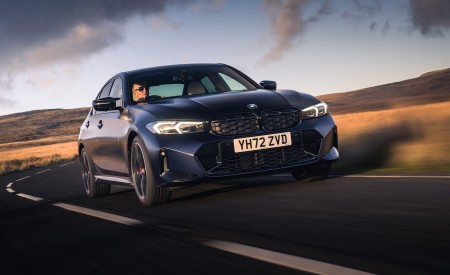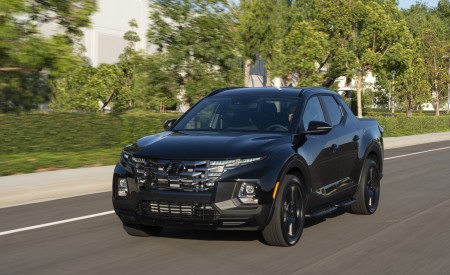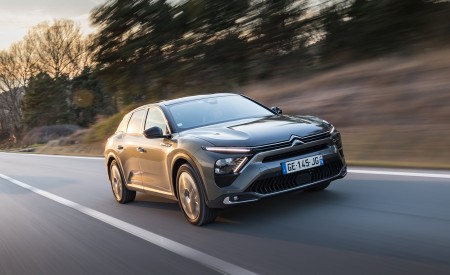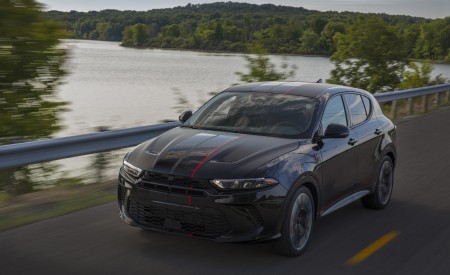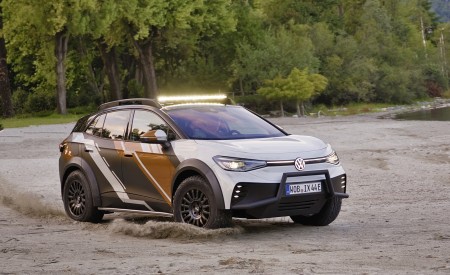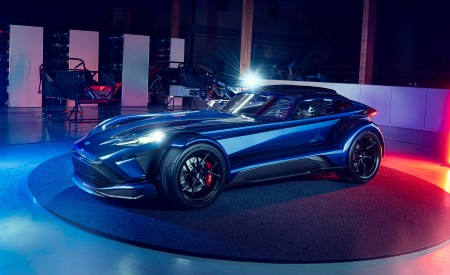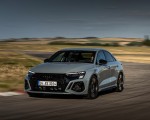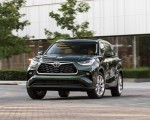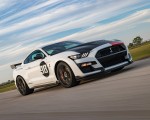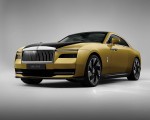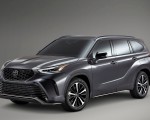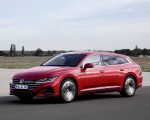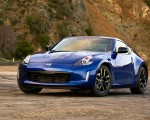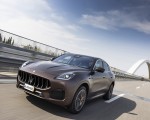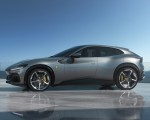2020 Toyota C-HR Hybrid (Euro-Spec)
The new, 2020 Toyota C-HR builds on the striking design language and outstanding dynamic performance that has already awarded the company’s C-SUV segment iconic status within the Toyota model range.
Launched in 2016 and positioned as a dynamic crossover combining extravagant looks with the handling prowess to match – yet delivering segment-best emissions performance – the first Toyota C-HR had a powerful impact on the C-SUV segment.
In its first year, the Toyota C-HR sold 120,000 units in Europe, instantly achieving a 10% share of the segment. Moreover, 8 out of 10 of these vehicles were equipped with hybrid powertrains. The success story has continued, and today more than 400,000 Europeans drive the Toyota C-HR.
Most significantly, the new, 2020 Toyota C-HR benefits from a second, more powerful hybrid system added to the powertrain range. It also features enhanced driving dynamics, more refined interior and exterior design, and an upgraded HMI (Human Machine Interface) featuring the latest multimedia technology.
The introduction of the additional hybrid powertrain gives customers the choice of two different hybrid options, a feature that is unique in the segment. The 122 hp 1.8 litre hybrid system remains, its eco performance enhanced by an upgraded lithium-ion battery, with CO2emissions as low as 109 g/km. (WLTP)
Top of the range is a powerful, 2.0 litre Hybrid Dynamic Force system. Generating 184 hp and CO2emissions from just 118 g/km (WLTP), this system combines high efficiency with a significant increase in power and, through updated suspension and improved NVH, an even smoother, quieter ride and new levels of driving dynamics.
The new Toyota C-HR remains true to its visual identity; its coupe-like lines creating bold styling that continues to stand out both in the Toyota range and the C-SUV segment. Subtle changes to both the front and rear of the car add simplicity, refinement and dynamism, while headlamp and rear light clusters have been reconfigured with the latest LED technology.
On board, the adoption of Toyota’s 2019 Multimedia system now allows full smartphone integration through both ‘Apple CarPlay’* and ‘Android Auto’. Additionally, this system facilitates ‘Over The Air’ map updates to the navigation platform: Toyota delivers the car with a free 3-year subscription for these updates and they are made available every 6 months.
New Toyota C-HR is equipped with an on-board communication system, providing its buyers to enjoy MyT app connected services. For Toyota C-HR launch, a new feature will be released in the app: Hybrid Coaching. This will reinforce Toyota Hybrid leadership by providing personalized coaching message to help drivers to increase their EV drive and by bringing to life Hybrid driving benefits on a daily basis.
Toyota’s European R&D division has led development of the 2020 Toyota C-HR, and it has been created specifically for the European market. It is built at Toyota Motor Manufacturing Turkey.
POWERTRAINS
- Segment-unique choice of two hybrid powertrains – 1.8 and 2.0 litre
- New hybrid powertrain features all-new 2.0 litre Hybrid Dynamic Force engine with world-beating 41% thermal efficiency
- All-new lighter, more compact hybrid system reflects significant advances in battery, electric motor and petrol engine technologies
- 1.2 litre turbo powertrain with optional All-wheel Drive (AWD) System
The new, 2020 Toyota C-HR offers customers an expanded, segment-unique powertrain range which features a second, 2.0 litre Hybrid Dynamic Force system positioned at the top of the range.
This fourth generation hybrid powerplant features a new 2.0 litre petrol unit from a completely new family of Toyota engines. Offering reduced internal losses and breakthrough engineering on volumetric efficiency, it develops 112 kW of power whist achieving a thermal efficiency of 41% – a combination of power versus efficiency that is unrivalled today in mass production.
Delivering 135 kW/184 hp, the new 2.0 litre hybrid powertrain combines superior dynamic performance with even greater efficiency than the 1.8 system. An output of 50% more power, while the consumption only increases by 10%. It generates CO2emissions as low as 118 g/km (WLTP) – a figure unrivalled within its segment – and returns combined fuel consumption of only 5.3 l/100 km.
The 90 kW/122 hp 1.8 hybrid powertrain is now equipped with a smaller, lighter and even more powerful lithium-ion battery pack. This is able to absorb and deliver more current, enhancing the electric motive force delivery. The system is even more natural to drive and maintains its emission standard at just 109 g/km (WLTP).
The 2020 Toyota C-HR is also available with a 1.2 litre turbo engine. Delivering 85 kW/116 hp and 185 Nm of torque, this unit generates CO2emission of from 154 g/km (WLTP) and returns a combined fuel consumption of from 6.9 l/100 km (WLTP).
The 1.2 litre turbo may be mated to either a six-speed manual gearbox or a Continuously Variable Transmission. CVT-equipped versions are available with either front- or all-wheel drive.
And finally, a 2-litre with 109 kW/148 hp, 189 Nm CVT-only model will be available for Eastern European markets.
2.0 LITRE HYBRID DYNAMIC FORCE SYSTEM
Every Toyota full hybrid powertrain offers its users silent, intuitive, responsive and self-sufficient EV technology with low cost of ownership, no need for plug-in recharging, offering outstanding fuel economy and low CO2emissions, and up to 80% zero emission driving time when used in urban areas.
Whilst continuing to reward customers with all of the above benefits, the 2.0 litre Hybrid Dynamic Force system goes further. Taking full advantage of the ride comfort, stability, handling and driving enjoyment inherent in the GA-C platform, the company has focused its efforts on making this next generation of hybrid powerplants not only easy, intuitive, but also very engaging to drive.
The completely new hybrid system features compact packaging that is lighter in weight and more efficient than earlier generation systems. It reflects significant advances in battery, electric motor and petrol engine technologies.
The hybrid battery is a larger pack with a higher energy density. Individual total cell power has been maintained, but the number of cells has been increased to match the more powerful electric motor and allow for higher energy absorption during regenerative braking.
To maintain equilibrium with the 2.0 litre Dynamic Force engine, both motor/generators are bigger and more powerful. Their power-to-weight ratio is amongst the highest in the industry, with the main electric motor delivering 80 kW and 202 Nm.
This combination of completely new internal combustion engine and hybrid system elements has allowed for a re-distribution of responsibilities within the different driving components.
The system can now be tailored to deploy much more natural-feeling engine acceleration. The response to the throttle pedal is immediate, and vehicle acceleration closely linked to that of engine rpm. It will offer drivers an ‘energised’ drive, with more power for a more dynamic, engaging driving experience.
NEW 2.0L DYNAMIC FORCE PETROL ENGINE
The design of the new Toyota C-HR’s Dynamic Force 2.0-litre dual VVT-i Atkinson cycle petrol engine follows the Toyota New Global Architecture ethos: highly modular-dependant application, yet sharing as many components as possible between the separate lay-outs and displacements.
Following this protocol allows Toyota to make use of the highest quality components as well as very high-tech solutions, in a very effective way.
This brand new engine can operate at a peak thermal efficiency of 41% and still deliver an output of 112 kW. With the base engine lay-out changed to a substantially higher stroke-to-bore ratio favouring torque delivery and efficiency, a focus on three key development pillars has effected these impressive specifications:
High speed combustion, reduction of internal losses and perfect temperature control
HIGH SPEED COMBUSTION
By minimising combustion time, the engine turns more heat and pressure into mechanical energy. The Atkinson cycle further assists this goal as its operating principal makes the combustion stroke even longer, so that at the end of the cycle only a low residual pressure is lost to the atmosphere.
To achieve high speed combustion, the air-fuel mixture needs to be perfectly homogenous, and then compacted in to a small spherical shape surrounding the spark plug. Piston and combustion chamber design is precisely shaped to allow a compression ratio of 14:1 yet still maintain a stable burn.
The mixture is controlled in the first phase by the induction system. A completely redesigned intake manifold offers very little resistance while creating high air velocity.
The included angle of the intake valves has been increased, positioning them to generate a powerful tumble effect as the air enters the cylinders. Valve seats are now created with a 3-D printing process called laser cladding, exceptional for an engine produced at this scale. This process combines precision with very light and thin seats that do not inhibit the airflow and give a superior cooling performance.
The high speed tumbling air is charged with fuel at different stages. Dynamic Force engines are equipped with D-4S, a system that uses both indirect and direct injection to deliver precisely measured fuel. Each method has advantages in different engine load ranges and, depending on the exact circumstances, the system uses either direct, indirect or both to achieve perfect fuel delivery for fast and stable combustion.
This excellent aspiration is tuned by the Dual VVT-i system to match engine rpm and power request. Dual VVT-i will adjust opening and closing times intake and exhaust valves, balancing the required output with optimum efficiency. On intake side this is done by VVT-iE, meaning valve adjustment is by electric motor instead of a hydraulic system, allowing the system a wider adjustment angle as well as immediate control during engine start.
REDUCTION OF INTERNAL LOSSES
Every single component of this engine was created to be the smallest/lightest possible, without compromising quality.
In particular all moving components – camshafts, crankshaft, connecting rods, pistons, timing chains and gears – have been reduced in weight to minimise internal losses.
The use of special alloys in reciprocating parts has a cascading effect on all driving components, reducing bearing pressures and contact surfaces, and allowing for the adoption of a super thin grade (0W16) of lubricating oil allied to a continuously variable oil pump, resulting in lower internal pumping losses and enhanced reliability.
Additionally, the base engine components have also been lightened. The cylinder block outer wall measures just 2.3 mm, reducing its overall weight and lowering the centre of gravity to improve vehicle balance. As a result, total engine weight is only 113 kg – a reduction of almost 20% over the preceding 2.0 litre engine.
TEMPERATURE CONTROL
Temperature control is essential to facilitate the unit’s high efficiency operation. Dynamic Force engines have been designed without a mechanical water pump housing in the base block. Coolant flow direction is controlled through several pathways, and the flow speed continuously varied by means of an electric pump.
Depending on operation mode and unit temperature, flow control valves guide the coolant to create the correct warm-up and cool down effects to keep the engine within the designated temperature range.
WORLD-BEATING THERMAL EFFICIENCY
Thermal efficiency is a measurement that reflects how well an engine converts the energy available in its fuel into usable energy to power the vehicle.
As a result of a the listed mechanical improvements, state-of-the-art management systems and the utilisation of the Atkinson cycle, the new 2.0 litre engine achieves a maximum thermal efficiency of 41% – the world’s highest level for a mass-produced petrol engine. This surpasses even the 40% figure of the 1.8-litre engine in the fourth generation Prius.
MULTI-SHAFT HYBRID TRANSAXLE
The two different engines are combined with different transaxles. A power balance is essential to achieve smooth propulsion from the hybrid system, whilst oversizing creates unwanted losses.
The 4thgeneration 2.0 litre Hybrid Dynamic Force system has a redesigned transaxle that offers more efficient performance and packaging, and reduced weight. A gear train with the two electric motor/generators placed on multiple axes has been adopted to shorten overall transaxle length by 44 mm compared to the previous generation hybrid system.
The transaxle houses four components: two electric motor-generators (MG1 and MG2); a single planetary gear; and a reduction gear to the final drive.
MG1 serves primarily as a generator, converting any surplus power from the petrol engine into electricity, which can be stored in the HV battery. It also serves as the engine’s starter motor. MG2 is the electric drive motor, delivering 80 kW and maximum torque of 202 Nm, and also acts as a generator when the car is in regenerative braking mode.
MG2 drives the car from start-up, at low speed and in EV (Electric Vehicle) mode, and is the sole propulsion method when the vehicle is in reverse. Its coil construction differs from previous generations, and now focuses more on power than on torque delivery. MG2 has an improved power delivery at higher rpm allowing the EV drive capabilities of the new Toyota C-HR to operate at highway speeds, up to 120 km/h.
The reduced torque delivery at low speeds is compensated for by the engine when high acceleration is demanded. From a driver’s perspective, this feels more natural and is perceived as a better balance between components.
FULLY-REDESIGNED POWER CONTROL UNIT
33% smaller than, and offering a 20% saving in electrical losses over its predecessor, the fourth generation power control unit (PCU) is a technological marvel, boasting super high efficiency while boosting voltage up to 650V for the electric motors.
The PCU is the multi-purpose electrical heart of the vehicle, housing the inverter/voltage booster, a DC/DC converter for auxiliary power and the electronic control for the motor-generators.
HIGH VOLTAGE HV BATTERY
The battery packs of both 1.8 and 2.0 litre systems are located entirely beneath the rear seats, avoiding any intrusion into the load space. They have increased cooling efficiency and a wider regeneration range.
The 2.0 litre Hybrid Dynamic Force system is equipped with a very compact nickel-metal hydride (NiMH) battery with a total of 180 cells and a nominal voltage of 216 V.
Featuring 56 cells and rated at 207.2 V, the 1.8 litre system has been upgraded with a lithium-ion battery of reduced weight and volume. The higher capability of lithium-ion to receive and deliver current increases the dynamic capability of the system, with a more natural acceleration feel as a result.
1.2 TURBO PETROL ENGINE
Combining spirited performance with low fuel consumption, the 1.2 litre turbo engine adopts advanced technologies that allow the engine to change from the Otto-cycle to the Atkinson cycle under low loads.
The 1,197 cc engine delivers 116 hp/85kW and constant torque of 185 Nm between 1,500 and 4,000 rpm. It will accelerate the Toyota C-HR from 0 to 100 km/h in 10.9 seconds and on to a top speed of 190 km/h. All of this is achieved despite a strong focus on fuel consumption and emissions – the car returning 6.1l/100 km in the combined cycle, and generating CO2emissions of just 138g/km. (NEDC)
INTELLIGENT MANUAL TRANSMISSION
The 1.2 Turbo Toyota C-HR is equipped with Intelligent Manual Transmission. This system automatically increases the engine revs when downshifting to ensure a smooth gear change. The system also works when shifting up through the gears to reduce clutch shock, improving occupant comfort. Smooth standing starts are also ensured, and the risk of stalling is negligible.
ALL-WHEEL DRIVE (AWD) SYSTEM
1.2 Turbo Toyota C-HR versions with CVT can be equipped with a Dynamic Torque Control AWD system. Via an electro-magnetic coupling, front-fear drive force is precisely controlled, varying from between 50:50 to 100:0.
The system includes Cornering Control – a specific logic which helps the driver to track the intended driving line by adjusting drive force depending on conditions. Pre-Torque Control adjusts front-rear drive torque distribution to 90:10 the moment the driver moves the steering wheel, ensuring prompt vehicle response to the steering angle when cornering. And Yaw-rate Feedback Control helps drivers correct under- and oversteer through optimal adjustment of front and rear drive force every six milliseconds.
DRIVING DYNAMICS
- High bodyshell rigidity and low centre of gravity inherent in GA-C platform
- Updated suspension system to maximise performance and handling potential of 2.0 litre Hybrid Dynamic Force powertrain
- Comprehensive NVH reduction measures for a quieter, more comfortable cabin environment
Complimenting the high bodyshell rigidity and low centre of gravity inherent in its GA-C platform, the new Toyota C-HR features an updated suspension system to maximising the improved performance and handling potential provided by its range-topping 2.0 litre hybrid powertrain.
In addition, new NVH (Noise, Vibration and Harshness) reducing measures have been introduced allowing cabin occupants to further benefit from the inherent quietness of Toyota’s hybrid drive technology.
HIGH BODYSHELL RIGIDITY AND ENHANCED SUSPENSION
The Toyota C-HR is built on the GA-C platform, strategically adapted to suit the particular requirements of a stylish and dynamically rewarding C-segment crossover. The GA-C platform combines with the Toyota C-HR’s highly rigid bodyshell to provide excellent responsiveness that is consistent and linear to the driver’s inputs.
The Toyota C-HR with 2.0 litre Hybrid Dynamic Force system benefits from new suspension components, including shock absorbers, to provide an even more solid and comfortable feel when tackling rough road conditions, maintaining stability at all times.
CABIN NOISE REDUCTION
Careful study and treatment of every element of the new Toyota C-HR with the potential to generate NVH has resulted in an improvement at 11 different points, allowing an even better cabin noise performance. Carefully placed seals, noise insulation and absorption pads further reduce disturbing sounds entering the cabin.
The installation of the Hybrid Dynamic Force engine actively suppresses engine surging while engine bay insulation contains the remaining sounds. The same attention to detail has been applied the suppression of rolling noise produced by the tyres.
Overall, the new Toyota C-HR provides a more serene cabin even at higher speeds, allowing driver and passengers to enjoy conversations, music or simple silence.
LOW CENTRE OF GRAVITY
The basic design of the GA-C platform promotes a low centre of gravity, and a low-set driving position is another direct benefit of Toyota New Global Architecture. Hence, despite the C-SUV crossover driver’s hip point being raised slightly compared to the other models on this platform, a very engaging drive and balanced handling with much reduced body roll has been achieved.
DESIGN & TECHNOLOGY
- Subtle front and rear styling refinement maintains Toyota C-HR’s status as the most dynamic and sensual looking vehicle in the crossover market
- Enhanced visual and tactile quality of all surfaces and switchgear to create an even more premium cabin environment
- 2019 multimedia system for improved connectivity, Apple CarPlay, Android Auto, navigation updates and numerous apps
- JBL Premium Audio system for concert hall quality sound
The distinctive styling of new Toyota C-HR represents a further refinement of the original car, ensuring it maintains its status as the most dynamic and sensual looking vehicle in the crossover market.
On board, the cabin finishes have been upgraded to offer and even higher quality, more premium visual and tactile environment, whilst the adoption of Toyota’s 2019 multimedia system introduces new levels of connectivity and infotainment.
EXTERIOR DESIGN
The front of the new Toyota C-HR represents a further development of Toyota’s Under Priority and Keen Lookdesign identity. Creating a more refined appearance, character lines have been executed with a softer touch, and the front face now receives a body coloured lower lip.
Daytime Running Lights (DRL) have been redesigned to form a singular illuminated element located above the main beam projectors. The indicator lights are fully integrated within the same light emitter unit. The front fog lights are located at the extreme edges of the lower bumper, allowing for a very wide lower air intake which underlines the car’s powerful stance.
Rear light clusters, equipped with LED lamp technology, have been redesigned to give the rear view of the Toyota C-HR an even more expressive visual signature. They continue to stand proud of the bodywork, but are now connected by a sleek glossy spoiler. Executed in one piece, this design element seamlessly bridges the full width of the vehicle to become a powerful styling element which reinforces the Toyota C-HR’s broad, purposeful rear posture. Indicators at the rear are now the progressive type, further elevating look and feel.
A new wheel design has also been added which features gloss machined surfaces. The spokes’ propeller-like design creates a sense of motion, even at standstill.
The new Toyota C-HR is available in three new colours: Celestite Grey – a bluish silver; a more refined, premium and dynamic Red; and finally the stand-out Orange.
Further personalisation is offering in the form of two bi-tone variants: Gloss Black, which can be combined with many colours, and the iconic Metal Stream as a perfect counterpart to Celestite Grey and Black.
INTERIOR DESIGN
Customers consider the airy, expansive design of the cockpit to be one of the key pleasures of the Toyota C-HR ownership experience. Toyota has responded to this feedback by painstakingly enhancing the visual and tactile quality of all surfaces and switchgear to create an even more premium cabin environment.
Inlays have received a new, more refined surface finish. Door panels are now soft touch in all areas prone to contact. Reinforcing the link between interior and exterior design, many switches use a similar shape, reflecting the diamond motif of the exterior body shell. The same diamond theme is also visible in the door trim pattern, the headliner, the JBL speaker grilles and tweeter shape, and even the needles of the driver’s analogue instrument dials.
The front seat design features a slender, sporting upper section and a more strongly bolstered and supportive lower area. Functional differences have been emphasised through the use of differing tones, textures and patterns within the upholstery.
The new Toyota C-HR is now available with seat height adjustment on the passenger side as well, and full electric adjustment in combination with leather upholsteries.
The driver-oriented cockpit incorporates innovative details and intuitive, approachable high-technology. The operating switchgear, and an 8” display audio touch-screen, are slightly oriented towards the driver. Because the touch-screen stands proud of the instrument panel rather than being enclosed by it, the upper dashboard is considerably lower in depth, further helping driver visibility.
The new Toyota C-HR features a redesigned and improved HMI (Human Machine Interface) with Toyota’s 2019 Multimedia navigation platform and enhanced connected services. The touchscreen is now supplemented by a set of physical buttons and dials, such as for volume adjustment, greatly enhancing adjustment control and intuitive use while driving. The digital clock is integrated in the screen to give the entire panel an even cleaner appearance.
A carefully considered choice of finishes is essential to the harmonious, consistent, one-piece look of the interior. The interior design is linked to the grade choice, in the following schemes:
C-ENTER will have the upper instrument panel with a decoration line in grey. Seats are finished in a light grey stitching. Choosing the C-LUB grade moves the decoration line and stitching to a more refined celestite grey. C-ULT remains a more expressive desing with a blue upper instrument panel and the decoration panels in a distinctive anodised blue. Seats also combine both black and blue with a blue quilting. And finally C-HIC receives an orchid brown instrument panel with silver decoration. Seats quilted in orchid brown and with leather inserts.
ON-BOARD TECHNOLOGY AND CONNECTIVITY
The new Toyota C-HR introduces the very latest developments in connectivity and infotainment. The new, 2019 multimedia system incorporates Apple CarPlay and Android Auto, allowing the majority of used smartphones to not just synchronise, but actually merge with the car’s media-system.
The system also features the e-call functionality for immediate emergency support.
In addition, the new system allows over-the-air updates, making it possible for Toyota owners to continuously access the latest version of the navigation map without having to visit a dealership or download using intermediate devices such as a memory stick. Updates are performed using an internet connection via a smartphone or the on board internet module.
All Hybrid vehicles will be equipped with a MyT Connected services: an on board data system enabling additional services through MyT app on the smartphone.
This app enables users to communicate with their car, no matter where they are. They can plan journeys from home and send it to car, locate their parked Toyota C-HR, receive service maintenance reminders and book appointments with their preferred dealers.
With Toyota C-HR launch, the app is releasing a new service: Hybrid Coaching. It provides analytics on your driving style with some personalized and contextualized coaching to help you increase your EV mode drive and effectively lower your fuel consumption.
After each drive, users will be able get the feedback and learn what they did well and what can be improved to increase their fuel efficiency. They will also see how much and long they drove in EV, how much fuel and CO2they saved thanks to the Hybrid technology!
CONCERT HALL JBL SOUND
Recognising the importance that the Toyota C-HR target customer attaches to the quality of the in-car entertainment system, Toyota’s new crossover may be equipped with a tailor-made, JBL Premium Audio system.
Providing the ultimate in C-segment crossover sound reproduction, the system comprises an 8-channel, 800-Watt stereo amplifier and nine speakers. This new generation JBL amplifier, capable of more precise tuning, realizes even clearer, more powerful sound. Additionally, in order to improve the sound quality of compressed music source that ordinary people listen today, it supports Clari-Fi music restoration technology, which restores any compressed music up to almost CD quality.
Because the rigidity of the body structure surrounding each speaker – as well as various elements such as the windows and upholstery – can have a significant impact on sound quality, the system is the result of particularly close collaboration between JBL and Toyota’s engineers form early in the design process.
In-depth customer analysis was taken into account during system design, and resulted in the orientation of the speaker layout and the use of precisely integrated, A pillar-mounted horn tweeters – a JBL system signature – to deliver crisp, clear sound.
In addition to the two 25 mm horn tweeters, the system further features two 80 mm wide-dispersion units, two 17 cm sub-woofers in the front, two 15 cm full-range speakers in the rear, and a 19 cm sub-woofer in a dedicated, 10 litre ported enclosure in the loadspace.
Available in combination with the navigation option, the JBL Premium Audio system also incorporates lossless audio encoding.
The partnership between Toyota and JBL began in 1996 and has successfully expanded since then. Trusted by music professionals, JBL audio systems are used in major concert halls, venues and stadia throughout the world – 80% of live concerts, 70% of all recording studios and 90% of all THX-certified movie theatres.
Quality is the common focus of both companies, which has resulted in the new, uncompromised premium audio system specifically tailored to the new Toyota C-HR.
ENHANCED ACTIVE SAFETY
- Toyota Safety Sense fitted as standard across the model range
- Top-of-the-range models add Adaptive Front light System, Intelligent Clearance Sonar And Rear Cross Traffic Alert with braking function
Superior safety performance is inherent in TNGA, with priority given to achieving the highest standards of active and passive safety. Toyota’s new platforms and vehicle designs target the exacting standards set by the world’s leading independent crash test programs, supported by the advanced performance of the functions and systems of Toyota Safety Sense.
Part of Toyota’s commitment to democratise advanced safety equipment, Toyota Safety Sense is fitted, as standard, across the new Toyota C-HR range. The system includes a Pre-Collision System (including Pedestrian Recognition), Adaptive Cruise Control, Lane Departure Alert with steering control, Automatic High Beam and Road Sign Assist.
Top-of-the-range models benefit from the addition of Adaptive Front light System, Intelligent Clearance Sonar And Rear Cross Traffic Alert with braking function.
TOYOTA SAFETY SENSE
Toyota Safety Sense helps to reduce the risk of a collision and delivers additional benefits by making life easier for the driver and reducing fatigue.
PRE-COLLISION SYSTEM
At speed ranges of between 10 km/h and the vehicle’s top speed this system uses a front-mounted monocular camera sensor and millimetre-wave radar sensor to detect vehicles and pedestrians on the road ahead.
If it calculates a risk of a collision, it automatically warns the driver with a buzzer and alert in the multi-information display. At the same time the Pre-Collision Brake Assist engages to provide extra braking force the moment the brake pedal is pressed.
If the system determines that the possibility of a frontal collision with a vehicles and pedestrians is extremely high, the brakes are automatically applied to help avoid the collision or help reduce the impact of the collision.
Toyota’s improvement of the technology has enabled it to recognize and react to the presence of pedestrians as well as vehicles during the night and at and to function across a wider range of speeds.
ADAPTIVE CRUISE CONTROL
The new Toyota C-HR’s Adaptive Cruise Control with Full Speed Range Following Function makes use of the same millimetre-wave radar as the Pre-Collision system to maintain a safe distance from the vehicle ahead, slowing the car to a standstill if necessary and accelerating smoothly back to the pre-selected cruising speed once the way is clear.
LANE DEPARTURE ALERT
Lane Departure Alert uses the camera on the windscreen to track the vehicle’s course between lane markings painted on the road surface. If it judges that the new Toyota C-HR is about to move out of its lane without the turn indicator being used, the system sounds a buzzer and lights up a warning on the multi-information display. If the vehicle is still moving outside the lane, it will apply light steering force to assist the driver to bring the vehicle back on course.
AUTOMATIC HIGH BEAM
Automatic High Beam uses the same windscreen-mounted camera as the Lane Departure Alert system. This recognizes the lights of oncoming vehicles or traffic ahead, automatically switching the headlights to low beam to avoid dazzling other road users and returning them to high beam as soon as the road is clear, maximizing night-time illumination and the driver’s field of vision.
ROAD SIGN ASSIST
Road Sign Assist uses the front camera to recognize principal road warning and command signs. These are then repeated on the multi-information display, reducing the risk of the driver not being aware of speed limits, lane closures and other important information.
ADVANCED SAFETY AND DRIVER ASSISTANCE SYSTEMS
The new Toyota C-HR is available with a new range additional systems that actively support safer driving by giving the driver better real-time information about the area immediately around the car.
ADAPTIVE FRONT LIGHT SYSTEM
The newly developed Adaptive Front Light system (AFS) is a swivel control of both front main beams. By allowing the light of the inside of a corner to move in the same direction of the turn, the illuminated band is widened, offering the driver a distinctive advantage in assessing what is ahead. The swivel motion is related to steering wheel movement and vehicle speed to assure that the correct area is illuminated.
INTELLIGENT CLEARANCE SONAR
Intelligent Clearance Sonar, an evolution of the parking sensors, is now available. Able to detect all types of obstacles, the system connects to the braking system allowing it to stop the vehicle during parking manoeuvres. If a low speed collision is imminent, the brakes will intervene and bring the car to an immediate halt.
BLIND SPOT MONITOR
The Blind Spot Monitor uses radar sensors mounted on the rear corners of the vehicle to detect nearby vehicles in adjacent lanes as they move into the driver’s blind spot. The driver is alerted to their presence by LED warning indicators in the door mirror on the appropriate side of the car. The LED indicators will remain illuminated as long as the vehicle remains in the blind spot. If the driver operates the turn indicators, intending to move into path of the vehicle, the LEDs will flash rapidly to draw further attention to the hazard.
REAR CROSS TRAFFIC ALERT
The Blind Spot Monitor sensors are also used to provide Rear Cross Traffic Alert, monitoring approaching traffic – including cars, motorbikes – from either side as the vehicle is reversed out of a parking space. The new version of this system not only warns the driver, but also brakes and stops the Toyota C-HR if the vehicle is likely to move into the path of upcoming traffic.
SIMPLE INTELLIGENT PARKING ASSIST SYSTEM
The Simple Intelligent Parking Assist (S-IPA) system uses an array of sensors to identify viable parking spaces and surrounding objects.
The driver stops the car next to the parking space and pushes a single button to engage S-IPA, which guides the car to the correct position for reverse manoeuvring into the space. This system was developed to utilize the corner sensors for the parking assist.
